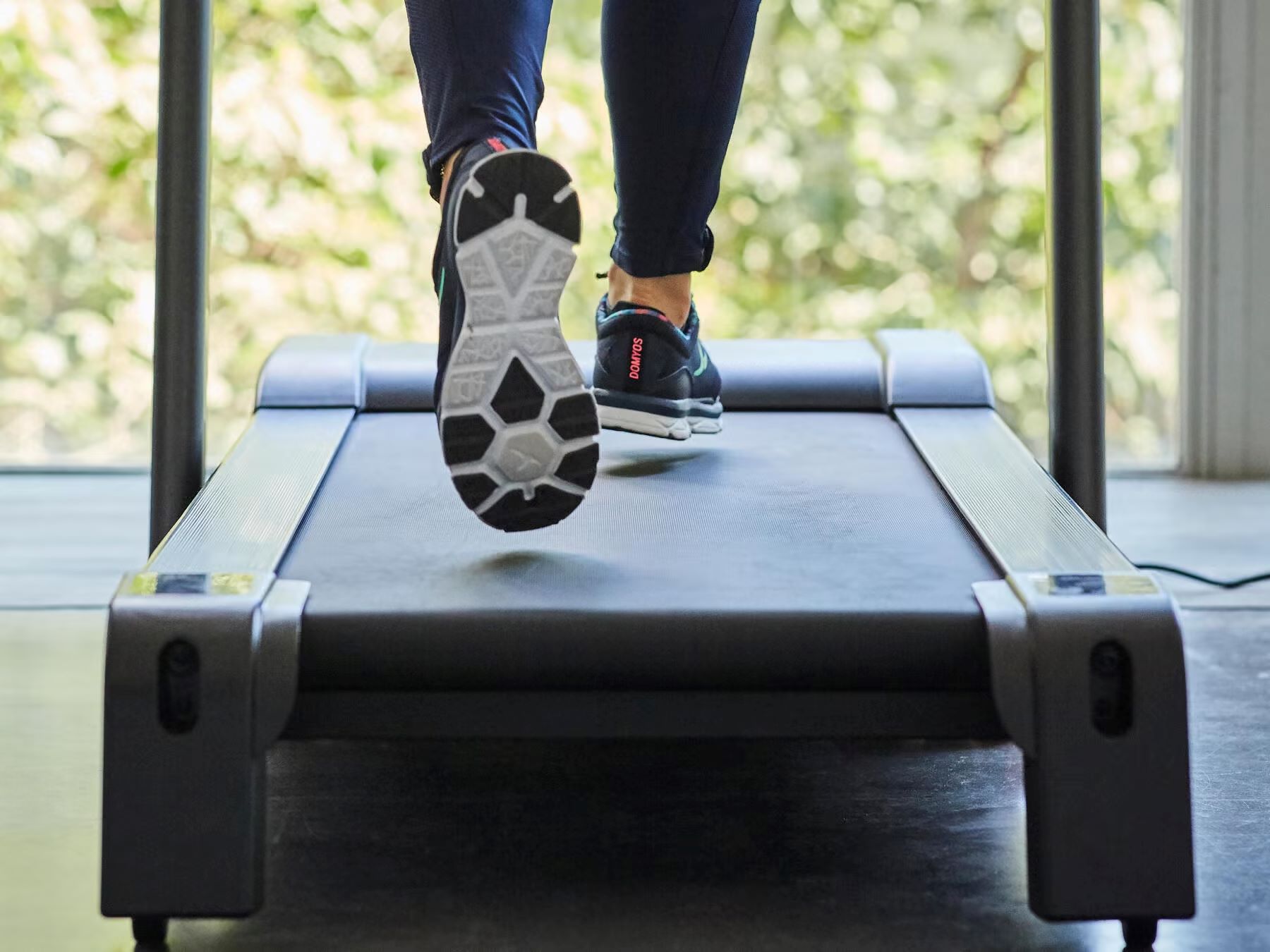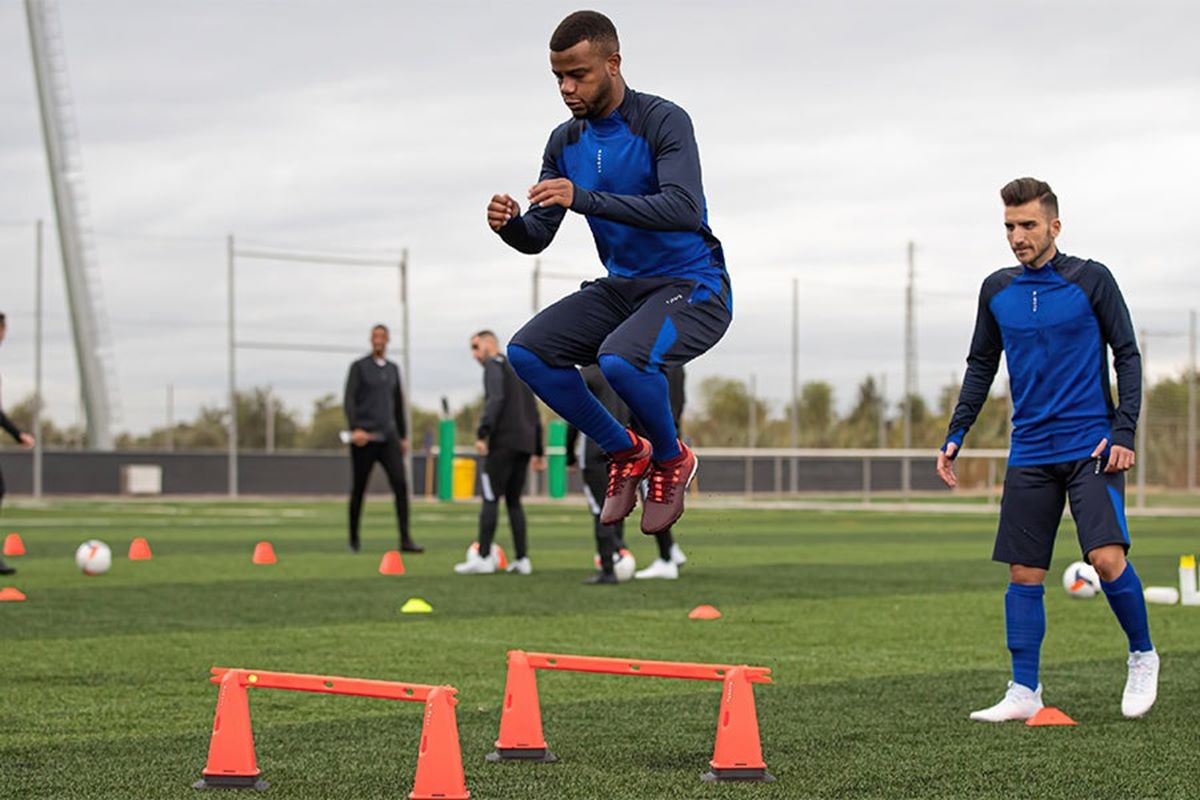Home>Misc>Featured>The CNS Is Affected By High-Intensity Interval Training And Takes At Least How Long To Recover


Featured
The CNS Is Affected By High-Intensity Interval Training And Takes At Least How Long To Recover
Modified: January 2, 2024
Learn how high-intensity interval training affects the CNS and the recovery time it takes. Featured article uncovering the impact of Featured workouts on the body.
Introduction
The popularity of high-intensity interval training (HIIT) has skyrocketed in recent years, thanks to its reputation for delivering maximum results in minimal time. This form of exercise involves short bursts of intense activity followed by periods of rest or lower intensity. HIIT is known to enhance cardiovascular fitness, increase metabolism, and promote overall health and well-being. However, there is another important aspect of HIIT that is often overlooked – its impact on the central nervous system (CNS).
The CNS is a complex network of the brain and spinal cord that controls and coordinates all bodily functions. It plays a crucial role in regulating muscle contractions, hormone production, and even cognitive processes. When we engage in high-intensity exercise, such as HIIT, it places significant demands on the CNS. This can lead to both positive and negative effects on its functioning.
In this article, we will explore the impact of HIIT on the CNS and the recovery time required for optimal CNS function. We will also discuss the factors that can influence the recovery process and provide recommendations for ensuring adequate recovery after HIIT sessions.
What is High-Intensity Interval Training (HIIT)?
High-Intensity Interval Training (HIIT) is a form of cardiovascular exercise that involves alternating between short, intense bouts of exercise and periods of rest or lower-intensity activity. These intense bouts, often referred to as “intervals,” typically last anywhere from 10 to 60 seconds, followed by shorter recovery periods.
Unlike traditional steady-state cardio exercises, such as jogging or cycling at a consistent pace, HIIT pushes the body to its maximum effort during the high-intensity intervals. This intense effort increases heart rate, stimulates muscle fibers, and creates a significant metabolic demand, leading to improved cardiovascular fitness and increased calorie burn.
The key principle behind HIIT is to maximize the amount of work done in a shorter period of time. This is achieved by pushing the body to its limits during the high-intensity intervals, followed by brief moments of recovery that allow for partial replenishment of energy stores.
HIIT can be performed using various exercises, including sprints, burpees, kettlebell swings, jumping jacks, or cycling. The exercises can be tailored to individual fitness levels, making HIIT accessible to people of different fitness backgrounds.
One of the major benefits of HIIT is its time efficiency. A typical HIIT session can be completed in as little as 20 minutes, yet it can deliver greater health benefits compared to longer, moderate-intensity workouts. This makes HIIT a popular choice for individuals with busy schedules who still want to reap the benefits of cardiovascular exercise.
It’s important to note that HIIT is a highly demanding form of exercise and may not be suitable for everyone. Individuals who are new to exercise or have certain health conditions should consult with a healthcare professional before incorporating HIIT into their routine.
Impact of HIIT on the Central Nervous System (CNS)
High-Intensity Interval Training (HIIT) has been shown to have profound effects on the central nervous system (CNS). During a HIIT workout, the CNS experiences increased activation and stimulation due to the high-intensity bursts of exercise.
One of the major impacts of HIIT on the CNS is the activation of the sympathetic nervous system. The sympathetic nervous system is responsible for the body’s “fight or flight” response, increasing heart rate, blood pressure, and the release of stress hormones like adrenaline. These physiological changes help the body meet the demands of the high-intensity exercise.
Furthermore, HIIT has been found to enhance neuroplasticity, which is the ability of the brain to reorganize and form new neural connections. The intense exercise stimulates the release of certain growth factors and neurochemicals, promoting the growth and survival of brain cells. This can have positive effects on memory, learning, and overall cognitive function.
On the flip side, HIIT can also induce oxidative stress in the CNS. Oxidative stress occurs when there is an imbalance between free radicals, which are highly reactive molecules, and the body’s antioxidant defenses. The intense exercise of HIIT generates an increased production of free radicals, leading to potential damage to the CNS cells.
Another potential impact of HIIT on the CNS is the release of inflammatory molecules. Intense exercise can trigger a temporary inflammatory response in the body, including the brain. While inflammation is a normal part of the body’s healing process, chronic inflammation can have detrimental effects on CNS function and overall health.
It is worth noting that the effects of HIIT on the CNS can vary from person to person. Individual factors such as fitness level, age, genetics, and overall health can influence how the CNS responds to HIIT. Additionally, the duration and intensity of the HIIT sessions can also play a role in the magnitude of the CNS impact.
Overall, while HIIT can provide numerous health benefits, it is essential to be mindful of the potential impact on the CNS. The activation of the sympathetic nervous system, enhanced neuroplasticity, oxidative stress, and inflammation are all factors to consider when engaging in HIIT workouts.
Recovery Time for the CNS after HIIT
After engaging in high-intensity interval training (HIIT), it is crucial to allow sufficient time for the central nervous system (CNS) to recover. The recovery time needed for the CNS primarily depends on the intensity and duration of the HIIT session, as well as individual factors such as fitness level and overall health.
HIIT places significant demands on the CNS, including increased activation of the sympathetic nervous system, oxidative stress, and potential inflammation. These factors can lead to temporary disruptions in CNS function, which require adequate recovery to ensure optimal performance and avoid overtraining.
The recovery time for the CNS after HIIT can vary from hours to days. In the immediate aftermath of a HIIT session, there is an elevated state of CNS activity due to the release of hormones and neurotransmitters. This heightened state can last for a few hours, during which the body initiates various physiological processes to restore homeostasis.
Within the first 24 to 48 hours after HIIT, the CNS goes through a process of repair and restoration. This involves replenishing energy stores, repairing any cellular damage, and rebalancing neurotransmitter levels. The duration of this recovery period may be influenced by factors such as the intensity and duration of the HIIT session, the individual’s fitness level, and the presence of any pre-existing CNS conditions.
For individuals who engage in regular HIIT workouts, it is important to incorporate adequate rest and recovery periods between sessions to allow the CNS to fully recover. Failing to do so can lead to overtraining, increased risk of injury, and decreased performance.
It is worth noting that every individual’s recovery time may vary. Factors such as age, overall health, sleep quality, and nutrition can impact the rate at which the CNS recovers. Individuals who have pre-existing CNS conditions or are under high levels of stress may require additional recovery time.
In order to optimize CNS recovery after HIIT, it is recommended to prioritize rest, quality sleep, and proper nutrition. Giving the body adequate time to recover will not only support CNS function, but also promote muscle repair, reduce inflammation, and enhance overall health and well-being.
Factors Affecting CNS Recovery
The recovery of the central nervous system (CNS) after high-intensity interval training (HIIT) is influenced by various factors. Understanding these factors can help individuals optimize their recovery and ultimately enhance their performance and overall well-being.
1. Intensity and Duration of HIIT: The intensity and duration of the HIIT session play a crucial role in determining the impact on the CNS and the subsequent recovery needed. More intense and longer HIIT sessions tend to place greater stress on the CNS, requiring more time for recovery.
2. Individual Fitness Level: An individual’s fitness level plays a significant role in CNS recovery. Fitness level influences the body’s ability to handle and recover from high-intensity exercise. Those who are more physically fit may have a shorter recovery time compared to individuals who are less fit.
3. Age: Age can affect CNS recovery as well. Older individuals may require more time for recovery due to age-related changes in the body’s ability to repair and regenerate cells. It is important for older individuals to listen to their bodies and give themselves ample time for recovery.
4. Sleep Quality: Sleep is an essential factor that affects CNS recovery. During sleep, the body undergoes important restorative processes, including repair and regeneration. Quality sleep is crucial for CNS recovery, so ensuring adequate sleep duration and quality is vital after HIIT sessions.
5. Nutrition: Proper nutrition plays a significant role in CNS recovery. Consuming a balanced diet that includes sufficient protein, healthy fats, and carbohydrates can provide the necessary nutrients for tissue repair and replenishment of energy stores. Adequate hydration is also important to support optimal CNS function and recovery.
6. Stress Levels: Chronic stress can have a detrimental impact on CNS recovery. High levels of stress can disrupt the body’s hormonal balance and impair the recovery process. It is important to manage stress through relaxation techniques, mindfulness, and other stress-reduction strategies to support CNS recovery after HIIT.
7. Overall Health and Wellness: An individual’s overall health and wellness can affect CNS recovery. Factors such as underlying medical conditions, medications, and overall lifestyle habits can influence the rate and effectiveness of CNS recovery after HIIT. It is important to prioritize overall health and wellness to support optimal recovery.
Each individual may respond differently to these factors, so it is important to listen to your body and adjust your recovery strategies accordingly. Identifying and addressing any factors that may impede CNS recovery can help individuals optimize their recovery and maximize the benefits of HIIT.
Recommendations for Optimal CNS Recovery after HIIT
Proper recovery is essential for the optimal functioning of the central nervous system (CNS) after high-intensity interval training (HIIT). Here are some recommendations to support CNS recovery and enhance overall performance:
1. Allow for Adequate Rest: Giving your body ample time to rest and recover is crucial. Incorporate rest days into your HIIT training schedule to allow the CNS to recuperate and recharge. Overtraining can lead to CNS fatigue and decreased performance.
2. Prioritize Quality Sleep: Ensuring sufficient and restful sleep is essential for CNS recovery. Aim for 7-9 hours of quality sleep per night. Establish a relaxing bedtime routine and create a sleep-friendly environment to promote deep and rejuvenating sleep.
3. Follow a Balanced Diet: Proper nutrition is key to supporting CNS recovery. Consume a well-rounded diet that includes a variety of fruits, vegetables, lean proteins, healthy fats, and complex carbohydrates. These nutrients provide the building blocks for repair and energy replenishment.
4. Stay Hydrated: Hydration is vital for optimal CNS function and recovery. Drink adequate amounts of water before, during, and after HIIT workouts to replace fluids lost through sweat. Dehydration can hinder the recovery process and negatively impact performance.
5. Manage Stress: Chronic stress can impede CNS recovery. Incorporate stress management techniques such as meditation, deep breathing exercises, or engaging in activities that promote relaxation. Taking time to de-stress can help rebalance the CNS and support recovery.
6. Listen to Your Body: Pay attention to any signs of excessive fatigue, pain, or discomfort. Pushing through intense workouts when the body needs rest can prolong CNS recovery and increase the risk of injury. Be mindful of your body’s signals and adjust the intensity and frequency of your HIIT sessions accordingly.
7. Incorporate Active Recovery: Engage in light, low-intensity activities such as gentle stretching, yoga, or light swimming on recovery days. Active recovery promotes blood circulation, reduces muscle soreness, and helps the CNS recover more efficiently.
8. Seek Professional Guidance: If you are new to HIIT or have any underlying health conditions, it is advisable to consult with a qualified fitness professional or healthcare provider. They can provide personalized guidance and recommendations based on your individual needs and goals.
By implementing these recommendations, you can optimize CNS recovery after HIIT and promote overall well-being. Remember, recovery is just as important as the workout itself, allowing your CNS to recharge and adapt to the demands of high-intensity exercise.
Conclusion
High-intensity interval training (HIIT) offers a time-efficient and effective way to improve cardiovascular fitness and overall health. However, it is important to recognize the impact that HIIT has on the central nervous system (CNS). HIIT stimulates the CNS through intense exercise, leading to increased activation of the sympathetic nervous system, enhanced neuroplasticity, and potential oxidative stress and inflammation.
Understanding the recovery time needed for the CNS after HIIT is essential for optimizing performance and preventing overtraining. Factors such as intensity and duration of HIIT, individual fitness level, age, sleep quality, nutrition, stress levels, and overall health can influence the recovery process.
To support optimal CNS recovery, it is recommended to incorporate rest days into your HIIT training schedule, prioritize quality sleep, follow a balanced diet, stay hydrated, manage stress, listen to your body, incorporate active recovery, and seek professional guidance if needed.
By implementing these recommendations, you can ensure that your CNS recovers effectively after HIIT, promoting optimal performance, reducing the risk of injury, and enhancing overall well-being.
Remember, the CNS is a vital component of your body’s functioning and warrants proper care and attention. Prioritize recovery alongside your HIIT workouts to achieve long-term success and sustainable progress in your fitness journey.








